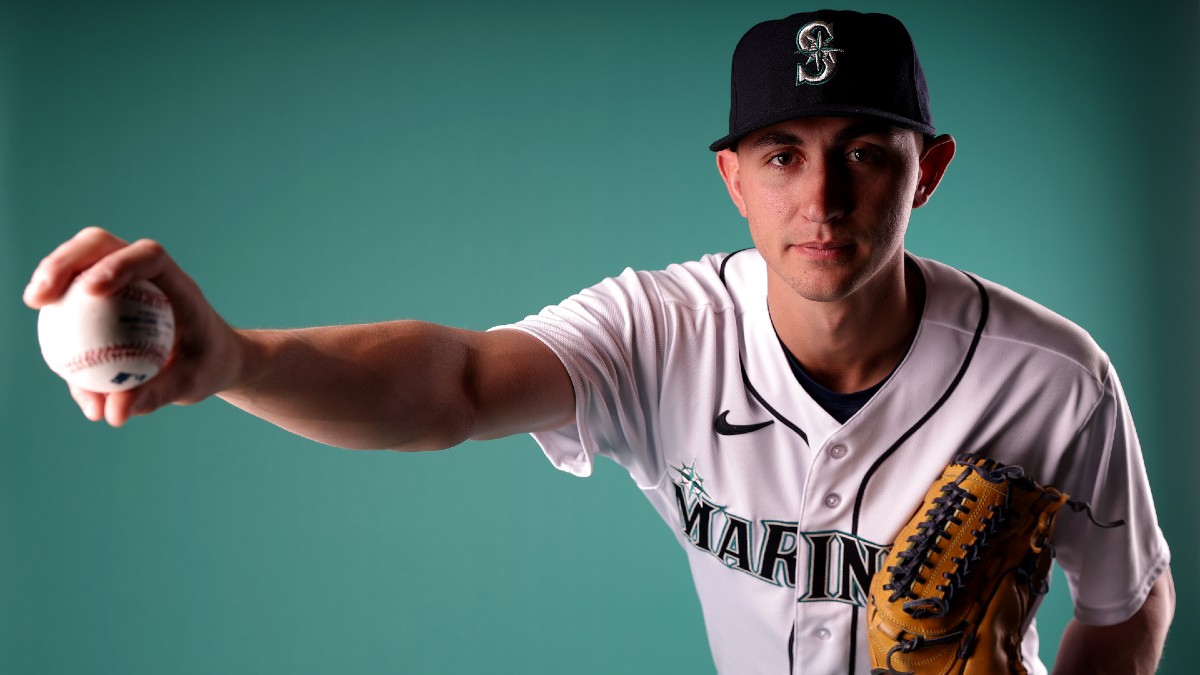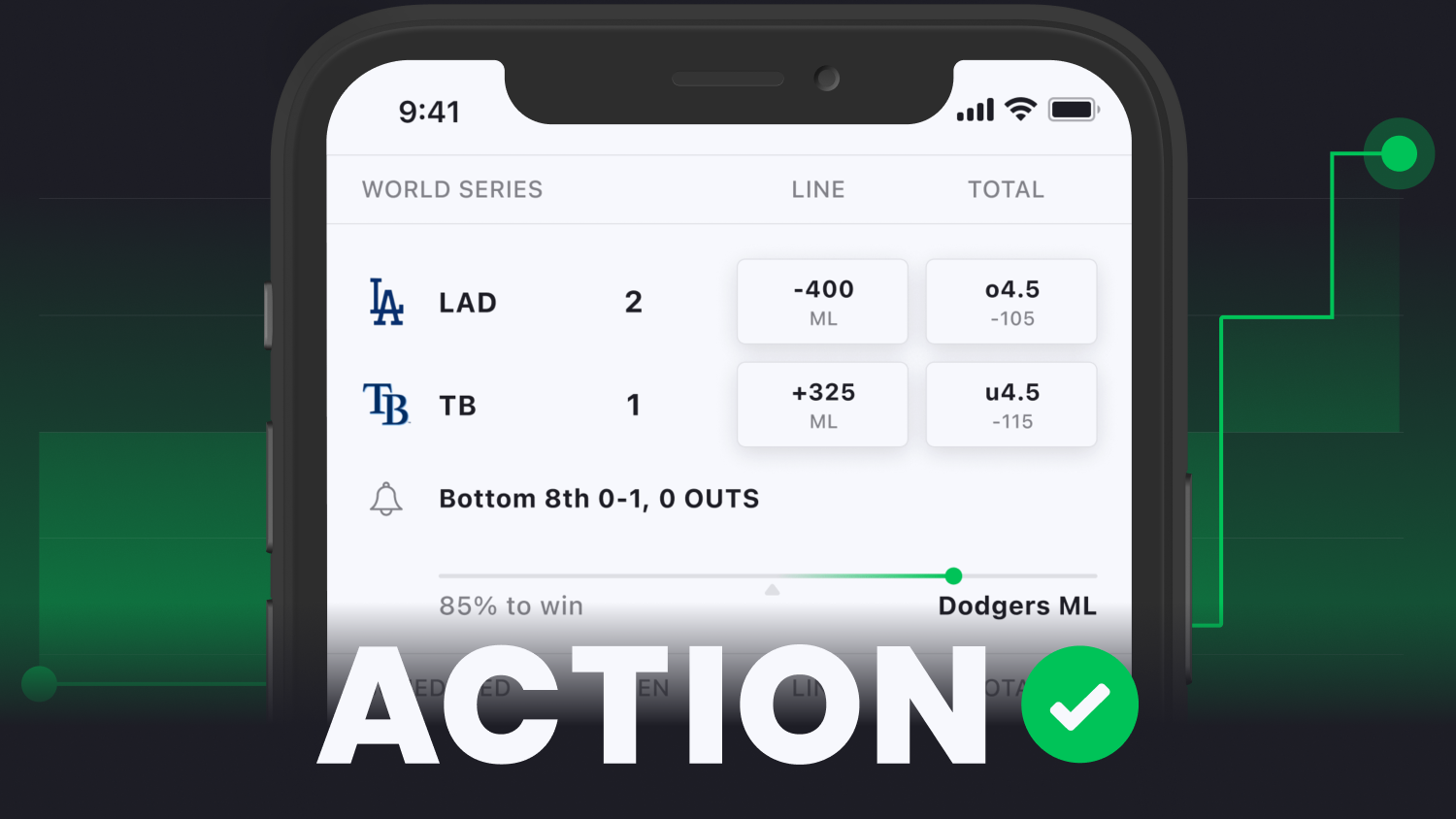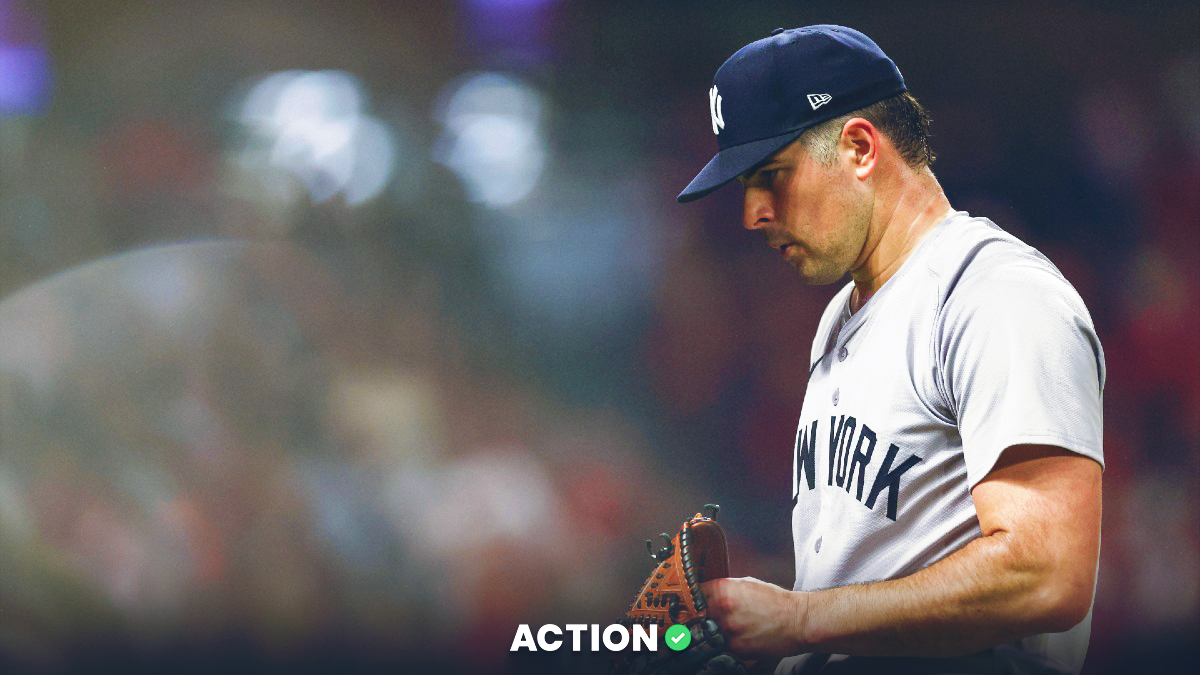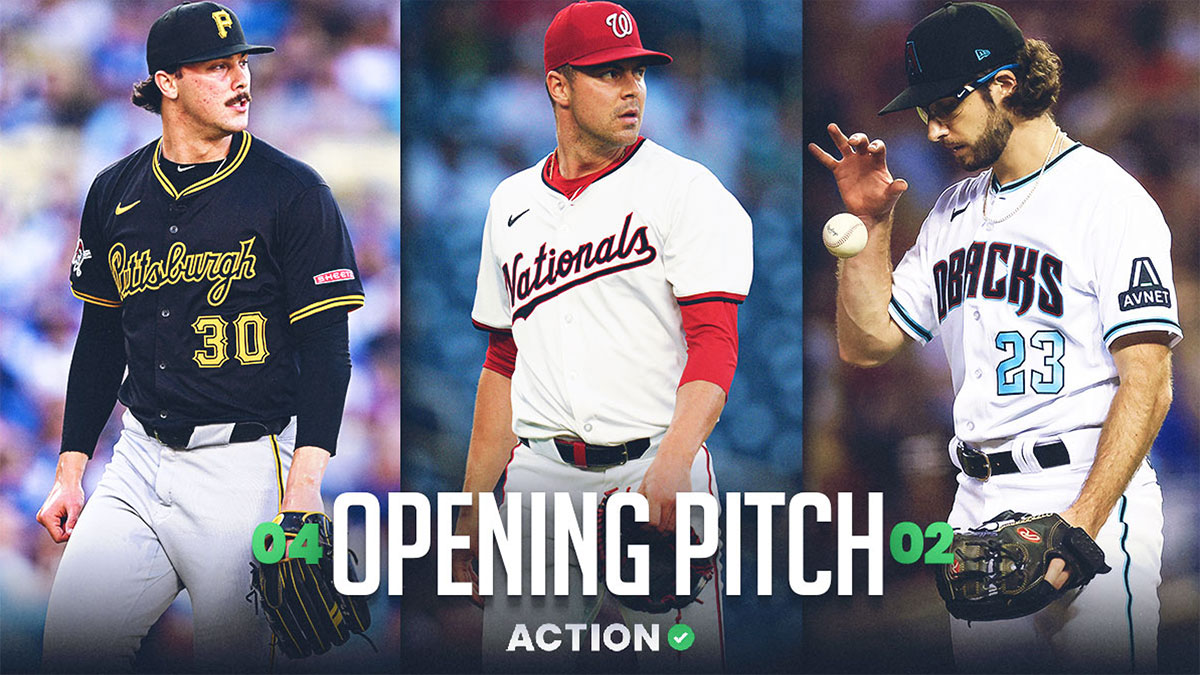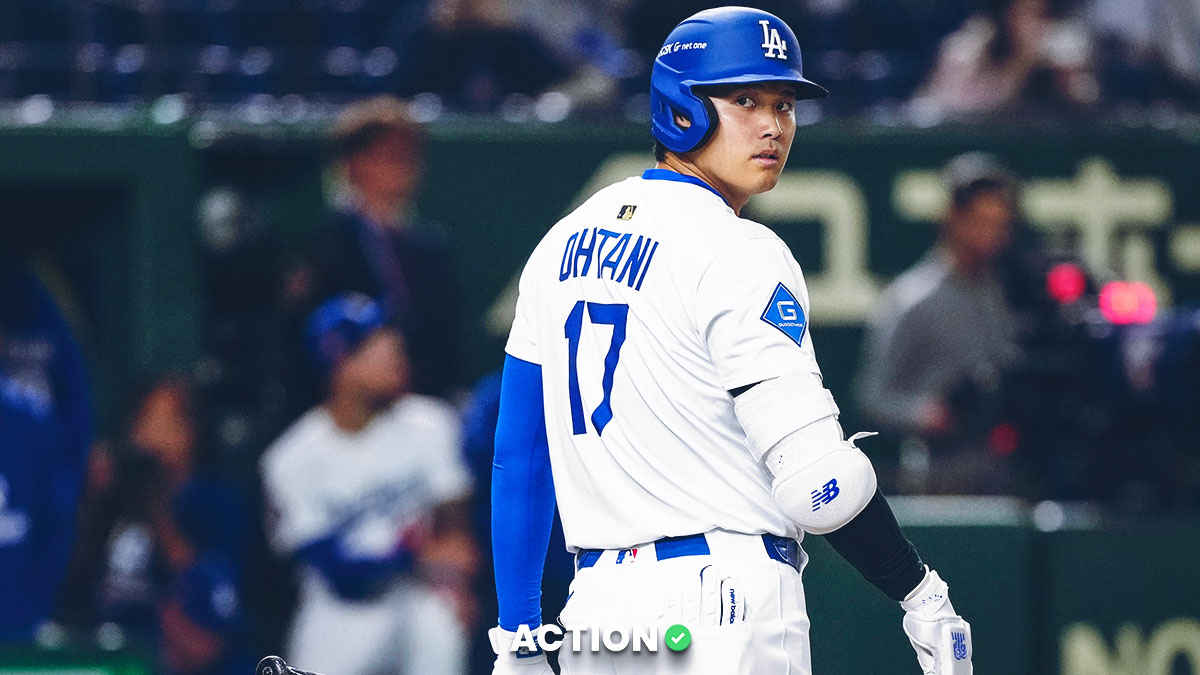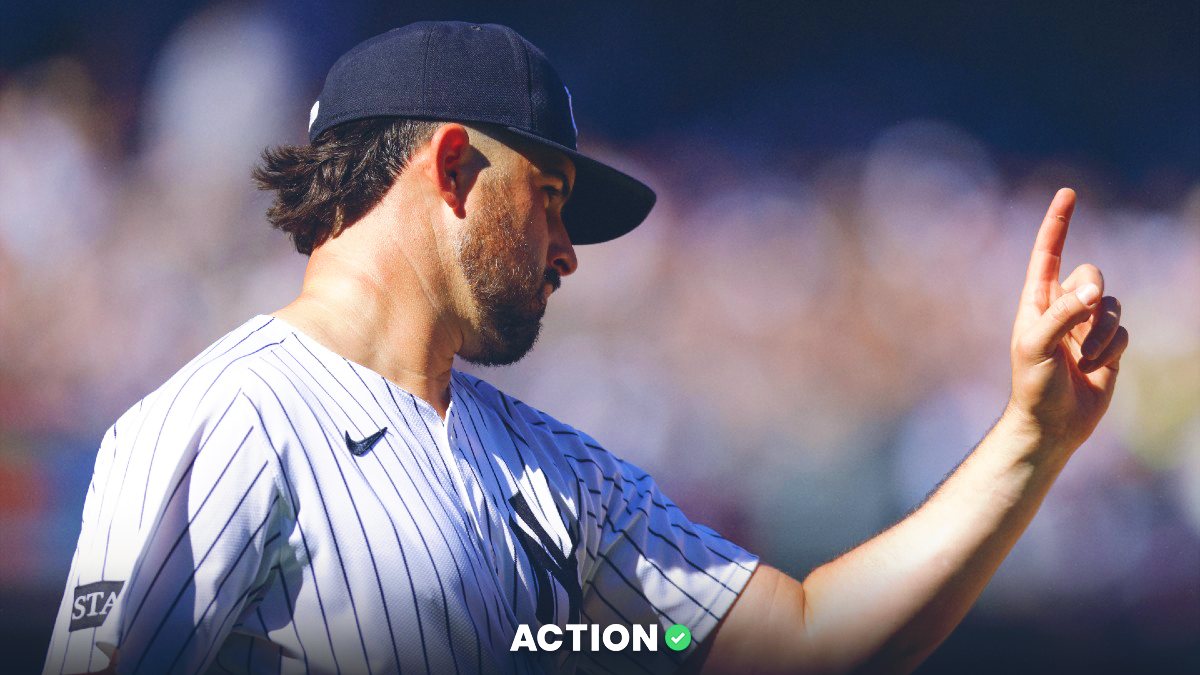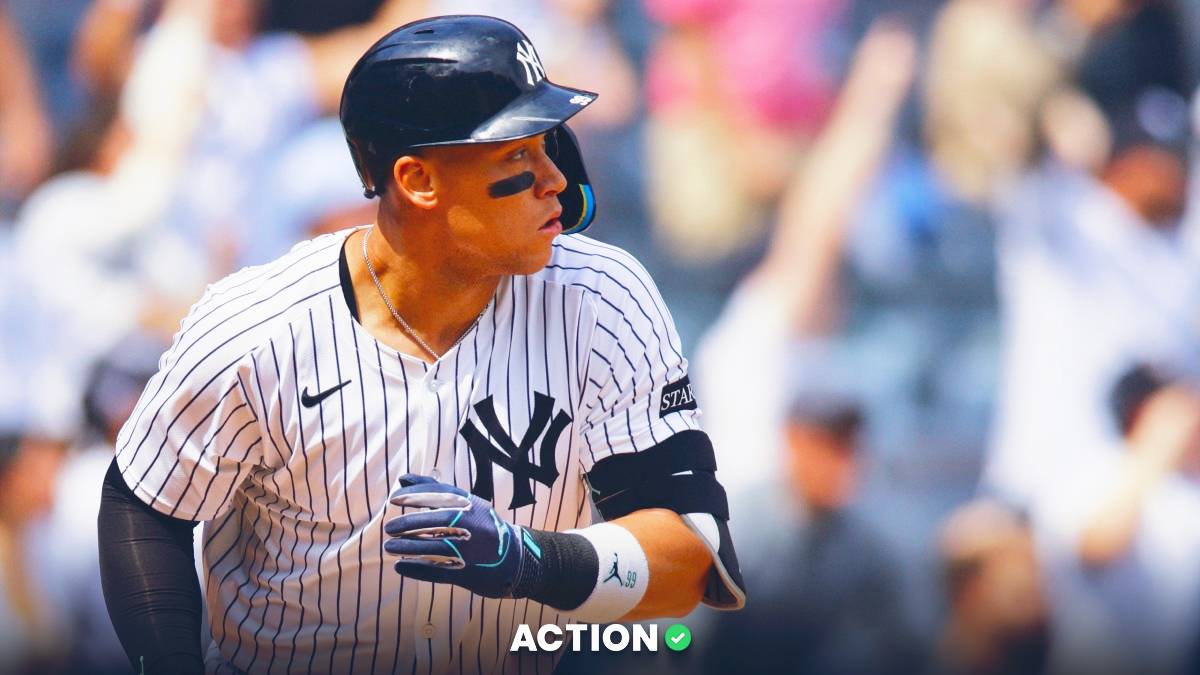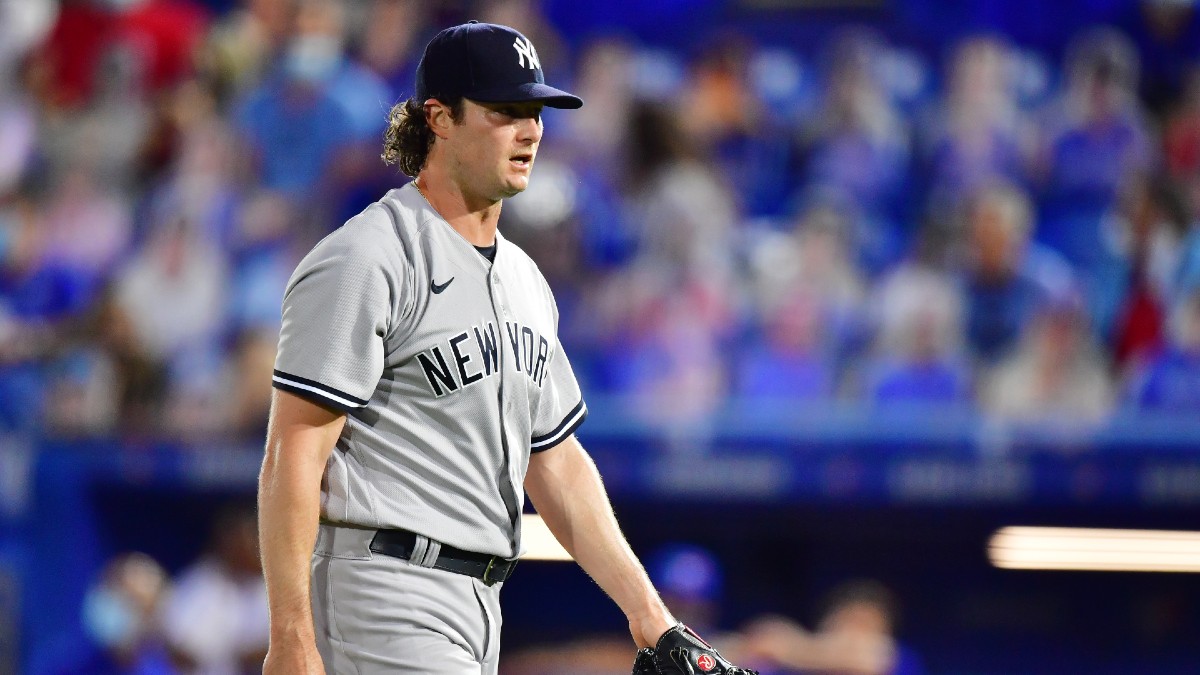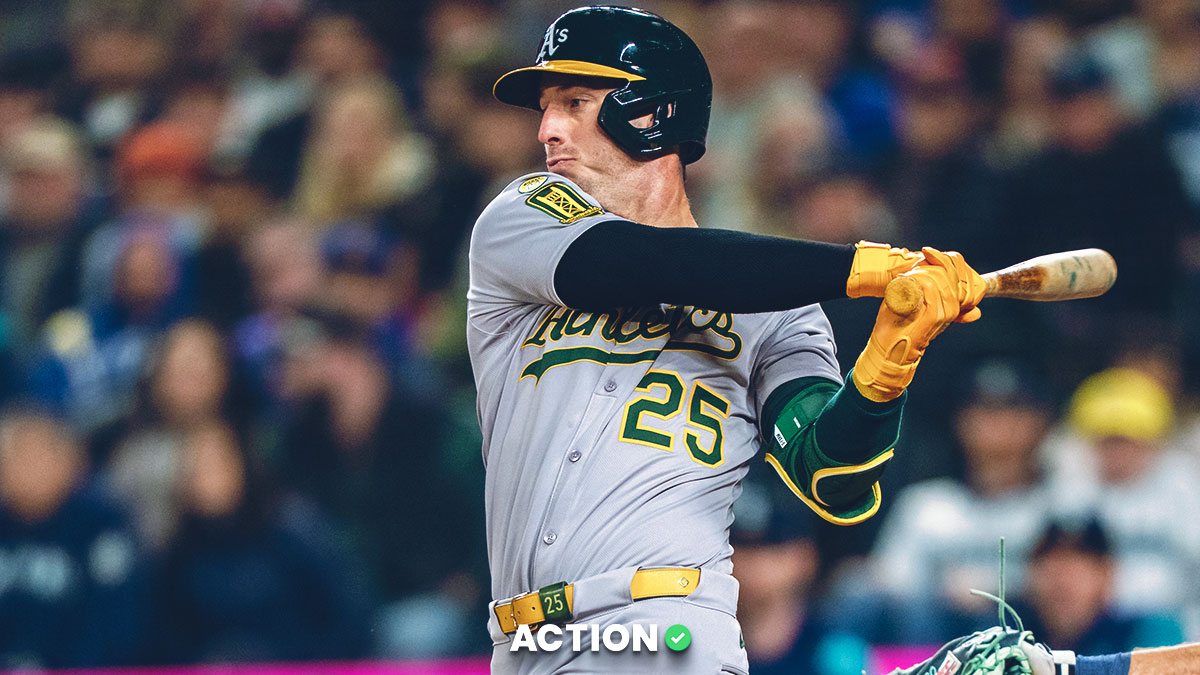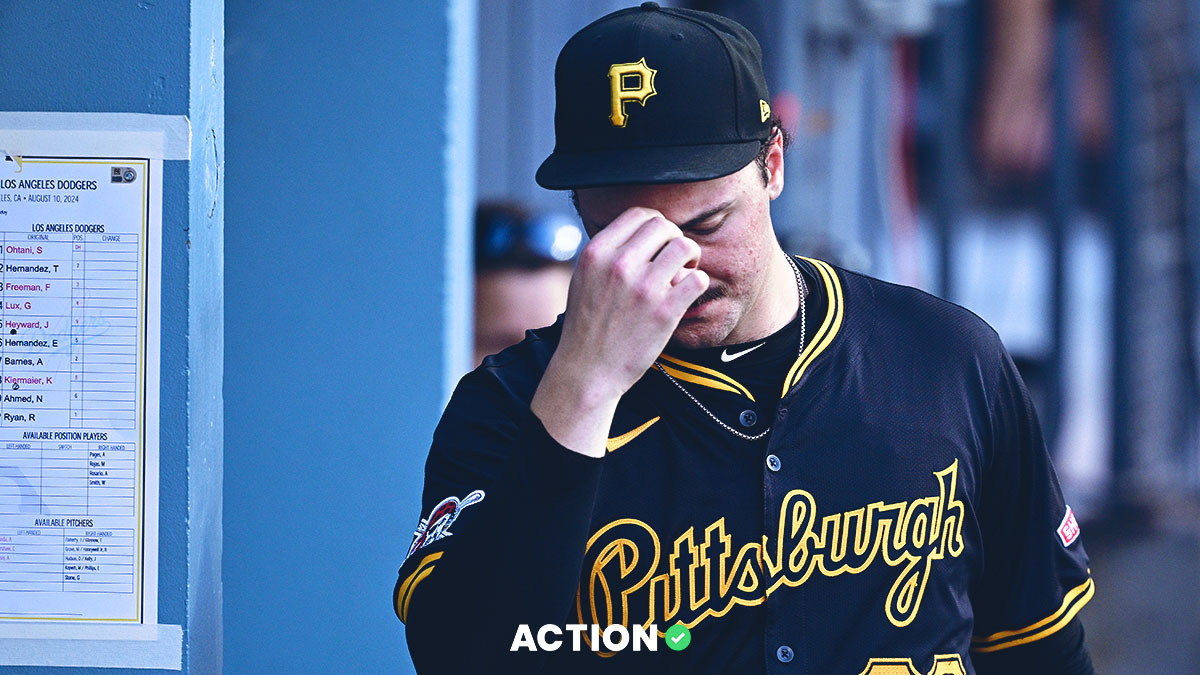To see Anthony Dabbundo's MLB bets throughout the 2023 season, follow him on the Action App.
The MLB season begins on Thursday with all 30 teams embarking on a 162-game marathon journey.
Most casual fans and even bettors have heard of the aces and top arms that will populate the pitcher’s mounds on Opening Day. But the betting market can be slow to react to up-and-coming starters or changes in pitch mix that change the true talent or quality of a pitcher.
Here are 10 potentially undervalued pitchers that I’m looking to bet on early in the season in 2023.
George Kirby
Kirby has everything you’d look for in a budding ace, and I don’t think the market is going to price him accordingly to start the 2023 season. When I’m trying to dig to find young pitchers with upside, excellent stuff is often sought after. It’s more predictive year to year and translates better than plus command. But when you have a command artist as good as Kirby and then he adds to his repertoire to improve his stuff, that’s a potential ace in the making.
The Mariners saw enough in Kirby to basically have him skip Triple-A in 2022. He pitched 24 2/3 innings in Double-A last year and walked 1.82 batters per nine. He threw 130 MLB innings and walked 1.52 BB/9. That’s elite command and it’s backed up by Eno Sarris’ Location+ numbers from The Athletic.
Only six regular starters had better Location+ numbers than Kirby last season — Aaron Nola, Zach Eflin, Justin Verlander, Ross Stripling, Wade Miley and Brandon Woodruff.
Kirby’s Stuff+ came in right around league average for starters and, as a result, he did get hit pretty hard when he missed his locations. Kirby’s fastball already grades out as above average by Stuff+, and he changed his slider in the second half of the season. From Aug. 6 through the end of the regular season, Kirby had a 3.10 ERA with 60 strikeouts and 11 walks in 56 innings.
If he can develop the one elite breaking ball — and maybe the slider is that pitch — Kirby immediately has ace potential. Most projection systems — The BAT and ATC — have him for 8.4 K/9 and a 3.60 ERA. I’d bet the over on strikeouts and the under on his ERA. He has a lot of Nola in his profile.
Hayden Wesneski
The rotation spot isn’t official as of this writing, but all indications are that Wesneski will be the Cubs' fifth starter to begin the season. The hype train is leaving the station as he continues to light it up in spring training. He’s made five starts in spring with a 2.12 ERA and 22 strikeouts in 17 innings.
49 Seconds of Hayden Wesneski Sliders/Sweepers. 🤢 pic.twitter.com/X1pdRwiHlM
— Rob Friedman (@PitchingNinja) March 24, 2023
Wesneski even featured on Pitching Ninja for his ridiculous movement on his sweeper/slider. Wesneski’s slider registered a 114 Stuff+ last season and it’s showcasing elite movement this spring and befuddling hitters in spring.
He doesn’t have overpowering stuff in general, but he has demonstrated plus command in a small sample of starts in the majors last season. Most projection systems have Wesneski around a 4.20 ERA, but he has three above average pitches and could easily beat those numbers.
Kyle Bradish
This isn’t the first time I’ve written about Bradish in a pitchers to watch column, and it’s likely not going to be the last. He’s one of a handful of young Baltimore pitchers with really intriguing upside in the potential rotation this season.
Bradish was pretty terrible in the first half of the season, but he redefined himself as a pitcher in the second half of the season. He struggled with homers and his fastball was crushed for most of his early starts.
Bradish made 10 starts between the start of the year and his demotion to Triple-A in June.
His line through June 18: 46 1/3 IP, 46 K, 18 BB, 7.38 ERA, 11 HR allowed, .967 OPS allowed.
Once he came back to the majors in the late summer, he upped the slider usage, which is his best pitch. He’s probably not going to have elite K-BB% numbers, but he showed in a decent sample that he can be a viable mid-rotation starter. The market certainly didn’t price him as such last year.
From July 29 through October: 71 1/3 IP, 65 K, 28 BB, 3.28 ERA, 3.73 FIP, 6 HR allowed, .607 OPS allowed.
Mitch Keller
Keller has impressive spring numbers once again with another bump in his stuff and velocity. Because he’s on the Pirates, you’re often betting Keller as a plus-money underdog against a superior lineup. Keller is projected a 4.79 ERA by The BAT projections and is mid-4s in ERA among the rest of the systems.
It’s easy to see why these projection systems are so low on Keller — he had a 6.17 ERA in 2021 and a 7.13 ERA in 2019 in his only meaningful MLB samples. But the Pirates right-hander added a new slider last year and the result was a 3.90 ERA in 2022.
The shape of his season left some bettors — myself included — burned last year. He had the improved spring training stuff and then it didn’t translate at all to the start of the MLB season. He had a 5.77 ERA in April and May with a poor K-BB% in two months when no one in baseball could hit. Just after I downgraded Keller and stopped betting him often, he turned his season around.
From June through the end of the regular season, Keller had a 3.20 ERA despite allowing a .322 BABIP. You can’t just throw out the poor start to the season, but Sarris’ numbers show another uptick in his sinker velocity and thus his Stuff+ numbers are sitting 113 in the spring data. I’m buying Keller again in 2023.
Cristian Javier
If you isolate just post-All Star break numbers, it’s hard to find a more impressive pitcher than Javier. He allowed a .157 batting average after July 12 (fourth best in MLB), led a combined no-hitter in the World Series and had the ninth-best strikeout rate in baseball.
The walks can be an issue at times, but his late life on his fastball makes the pitch near unhittable when located well. His fastball registered a 126 Stuff+ in 2022 and his slider is also well above average. The lack of a plus third pitch has held him back from carving out a consistent starting pitcher role in the past, but he’s locked that down now. Like Spencer Strider, his fastball and slider are so good he may not need a third pitch.
Projection systems have him around a 3.80 ERA this season, but he’s beaten those numbers every year he’s pitched as a starter or swingman in MLB. He should beat those numbers comfortably given his overpowering fastball.
Zach Eflin
Anytime the Rays give out a multi-year contract to a pitcher with an injury history, you have to pay attention. Their track record for tweaking and improving pitchers makes them one of the best run organizations in the entire sport. The results are early in spring training, but Eflin could have a late career breakout with his improved curveball shape and usage.
Eflin already had some of the best command and location numbers of any pitcher. His Stuff+ was below average relative to MLB starters, but his Stuff+ is solidly above average now (105) in spring because of the improved curveball.
Zach Eflin’s Curveball so far in Spring
78.3 MPH -> 76.8 MPH 🧐
-5.3 IVB -> -9.8 IVB 👌
12.9 HB -> 15.9 HB 🫡🚨🚨100.7 stuff + -> 130.2 stuff + 🚨🚨
The Rays unlocked something. Shocking development lol
— Cameron Levy (@levy_cameron) March 21, 2023
Eflin also gets the benefit of leaving Philadelphia. He was a consistent underperformer when you compare his actual ERA to his expected ERA. One major reason for that is that he induces a lot of ground balls and the Phillies were one of the worst defenses in the league.
Improved infield defense in Tampa Bay and a more friendly park should help Eflin immensely. When he’s healthy, he’s a bet-on pitcher.
Josiah Gray
The Nationals look like the worst team in the league on paper, and with Patrick Corbin as the Opening Day starter, it’s hard to expect much from them in 2023, especially now that Cade Cavalli is done for the year.
Gray has been a decent pitcher in his time in the majors, but his Stuff+ has taken a leap this spring because he’s changed his pitch mix. He’s throwing fewer fastballs and becoming more of a breaking ball pitcher.
His fastball has never graded out well and it’s often gotten hit hard. He allowed a .620 SLG on the fastball in 2021 and a .738 in 2022. It’s a main reason he’s allowed double-digit barrel rates in his first two full seasons as a starter.
Not having a good fastball (84 Stuff+) certainly limits him, but he can make up for it by using his excellent breaking balls more.
Officially interested in Josiah Gray again as a deep sleeper. De-emphasizing the fastball while throwing more sliders AND this new cutter *might* work. Gray used cutter 33% today. He also has not given up a home run this spring.
cc @CTowersCBSpic.twitter.com/0v72fk0hwE
— Frank Stampfl (@Roto_Frank) March 21, 2023
Gray has replaced the fastball with more cutter usage and if he cuts down the homers, he’s going to beat his projections and cash plenty of big plus-money Nationals tickets in 2023 for bettors. Instead of a roughly 4.75 ERA like some projections suggest, the better pitch mix could move him up and help him beat the market.
Sean Manaea
Manaea is this year’s Alex Cobb. A veteran who had a poor season the year prior, signed with the Giants, went to Driveline, added velocity and now has plenty of hype entering the new season. Cobb had one of the most unlucky seasons you’ll ever see for an MLB starter last year, but the underlying process gains were absolutely there.
Manaea is looking to do the same. His fastball velocity ticked up multiple MPHs and was sitting between 94-96 in his spring debut. He’s been able to maintain that throughout his spring starts. His Stuff+ was a below average 94 last season, but a few extra ticks of velocity would push him to solidly above average.
He was already a positive regression candidate when you compare his 2022 BABIP and xERA to his career long numbers. His actual ERA was nearly a full run higher than his expected metrics last year. The improved velocity could make an even bigger difference. All of the projection systems have his ERA starting with a 4 in 2023, but don’t be surprised to see him in the high 3s.
Trevor Rogers
Rogers is an excellent bounce-back candidate after a really poor 2022 season. There’s nothing in his Stuff, Location or velocity numbers that suggested he was a considerably worse pitcher by the process data. His results were brutal, though, with a 5.74 ERA. He allowed way more runners on base to score, his HR/FB rate nearly tripled and his xERA jumped by 1.5 runs.
Batters did a ton of damage to Rogers on pitches outside of the zone, which is almost unheard of and unlikely to continue. His zone contact rate allowed ticked up a little bit but remained above average, a sign that he still has swing and miss stuff in the zone.
The problem for Rogers is that his contact rate allowed on pitches outside of the zone jumped from an elite 56% in 2021 to a well below average 69% in 2022. Given his fastball grades out above average, it probably won’t get rocked as hard in spring training and he should beat his 4.30 consensus ERA projection.
Jesus Luzardo
Luzardo is a pitcher I bet on frequently down the stretch last season and there are some very encouraging signs in his second half portfolio. The Marlins lefty doesn’t have a great fastball, but he’s still able to get a ton of swings and misses in the zone.
His K-BB% was top 15 among all MLB starters after August 1 last season. In that same time frame, only Jacob deGrom had a lower zone contact rate allowed. It’s an excellent way of looking at the quality of stuff from a results perspective.
Sarris’ model has him at a 123 Stuff+ in spring training and he’s primed to easily beat his 3.75 ERA expectation if he continues to improve his strikeout rate and generate more whiffs.
To see Anthony Dabbundo's MLB bets throughout the 2023 season, follow him on the Action App.


